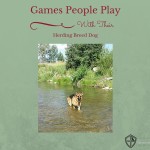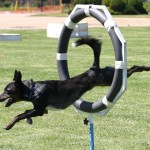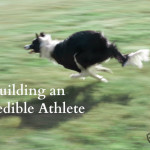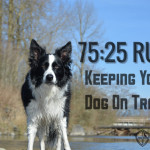FRUSTRATION: A Too Common Problem in the Modern Herding Dog
Aggression, fears and OCD. These are the top behaviour problems that herding breeds will have, if any, during their life, and most of those can be caused by frustrations.
Often these dogs are mislabeled by inexperienced trainers or another dog owner, then offered the most horrific training techniques which will often (if assessed wrong) make things so much worse! Any training technique used on your dog should be humane and as stress-free as possible. Use your common sense. If you are doing something aversive, you are causing a negative association – nothing good comes from this.
Working breeds, especially herding breeds, have more complex behaviour problems than your run-of-the-mill lap dog. Your dog has been bred for hundreds of years, if not many more, to perform a task successfully with either the help of the handler or independently. All of a sudden, when we take that breed and force it to conform to a life very foreign to him or her, behaviour problems come up! The dog isn't doing what he or she is meant to do, yet their brains are saying "work, work, work, work." Work soon turns into ‘over-thinking’ and problem solving that we humans don't necessarily always enjoy (digging, barking, fighting, self-mutilation). Your dog is desperately screaming for help, and that is what I’m hoping you will do.
Where to Start
I’m going to go over the very basic needs that your dog wants and needs to be happy. Often, these are the first solutions a trainer or expert will go over with you before getting into more complicated behaviour assessments.
Meeting Your Dog’s Basic Needs and Avoiding Frustrations
Physical Exercise
This is such a no-brainer, but it is surprisingly overlooked by an extensive amount of handlers. YOUR DOG NEEDS TO RUN! A herding dog is not happy on a leash 75-95% of the time; they are miserable, frustrated and jumpy. Your breed was meant to control; when you slap a leash on them all the time, they have no control and become highly frustrated. This is where reactivity, aggression and frustrations come from.
Depending on the herding breed, exercise will vary. Do the research and know what your breed was made for. Border Collies/Aussies, etc. are built for endurance. These dogs were meant to travel long distances each day; these dogs will need a minimum of two hours of physical stimulation per day to be satiated. Rottweilers and GSD were not built for endurance. They were built for their bruteness and intimidation, so these dogs will need a lot less intense physical stimulation, but still need physical stimulation on a slower pace as well as high amounts of mental enrichment (thinking).
Physical Exercise Ideas: Flirt Pole Training, Agility, Herding, Flyball, Treibball, Ball Throwing, Disc Dog, Dock Dog, Trick Training, Hiking, Swimming, Scenting, O-Rally.
Mental Stimulation
This is a need that is usually overlooked by most owners. We give them attention and other low forms of mental enrichment, but it's not even coming close to what they want or need.
Think about it: your dog was bred to independently use their own mind in intense situations, and that takes an incredible amount of intelligence to adjust according to the situation.
When we don't provide our dogs with problem solving tasks daily, they become bored and frustrated and start making up their own games. These dogs are bred to think and utilize their minds, so if we do not satiate that need, we are all in trouble!
Herding breeds are not chewers; they have no interest in chewing and destroying things when offered another desirable behaviour or task to perform. It's when we don't provide our dogs with the appropriate tasks that they should be doing that you start hearing about the shepherd chewing the couch or the Rottweiler eating its toys. THIS IS ABNORMAL BEHAVIOUR.
Mental Stimulation Ideas: My YouTube Channel has many ideas on games, tricks and cues to teach your dog, such as Treasure Hunts and Tug Game.
Structure
Any good shepherd knows that with any well-behaved herder, there is a lot of structure involved. This is the "you can do this" and "you cannot do that", plain and simple. Often to be successful at creating structure for a herding breed, you can't be lazy or your dog will run all over you.
Let me start by saying structure isn't screaming or yelling at your dog, nor is it physically forcing or manipulating him or her to do something. Structure starts with a healthy respect for your dog and vice versa. If you make your dog happy (respecting your dog), your dog will in turn respect you. This will make creating structure much more simple.
Social Interaction
Plain and simple. Your dog is a working breed, but your dog is also a dog which is a very social creature. When you deprive a dog of social ties, you create a depressed, angry dog. These dogs are meant to work with their handler all day and then put away to sleep. Not stuck in a house all day and let out for short, controlled periods of time, or stuck in the yard all day.
When we assess a dog’s problem, these are the first four solutions we look at: is the owner meeting the dog’s four basic needs? When you meet these basic needs, often the behaviour problem(s) ease up as the dog becomes happier.
Article By:
Kris Crestejo, CDBC







